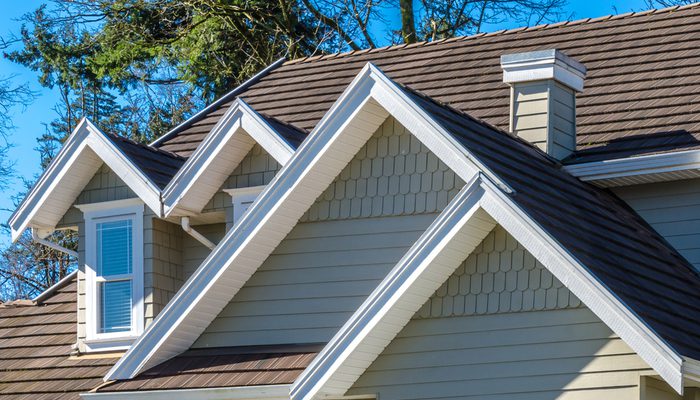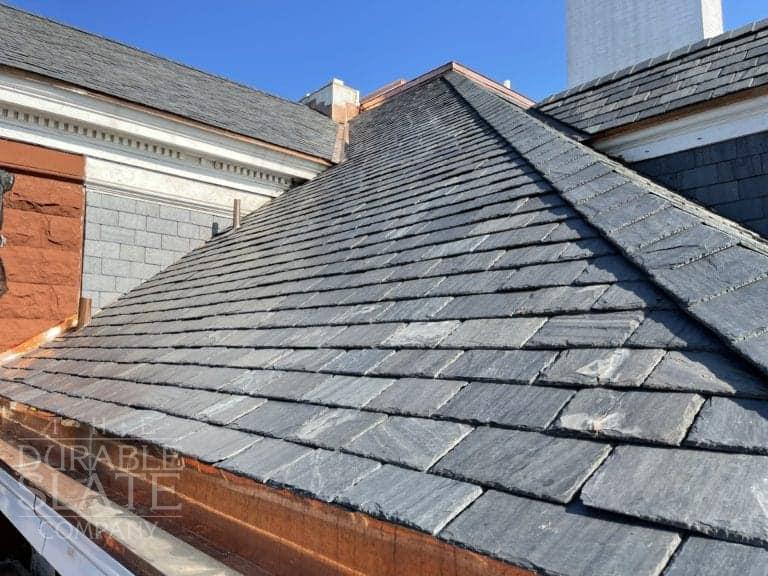Exactly How Gainesville Roofing Companies Can Transform Your Home's Outside
Exactly How Gainesville Roofing Companies Can Transform Your Home's Outside
Blog Article
Ideal Practices for Ensuring Correct Roofing Ventilation
A well balanced consumption and exhaust vent ratio, typically 1:300, plays a pivotal duty, with consumption vents preferably put at the lower edge of the roof for trendy air entrance and exhaust vents at the peak for warm air leave. Keeping insulation away from vents is essential to protect against airflow restriction.
Understand Ventilation Essentials
Properly understanding ventilation essentials is essential for guaranteeing the longevity and effectiveness of roofing systems. Reliable ventilation alleviates dampness build-up and temperature level extremes in the attic room, both of which can lead to considerable architectural damages in time. A well-ventilated roofing system assists in protecting against common issues such as mold development, timber rot, and ice dams, which can endanger the honesty of the roof covering materials and the underlying structures.
The key goal of ventilation is to promote the movement of air, allowing for a regular exchange between the interior and exterior settings. This equilibrium is accomplished through a combination of consumption and exhaust vents that function together to keep ideal air flow. Consumption vents, normally located along the soffits or eaves, enable fresh air to get in the attic room area, while exhaust vents, frequently positioned at or near the roofing system ridge, enable warm, moist air to escape.
Key factors influencing the effectiveness of roofing system ventilation consist of appropriate positioning, ample sizing, and guaranteeing that both consumption and exhaust vents are unhampered. Regular evaluation and maintenance are crucial to recognize possible obstructions, damage, or inadequacies in the ventilation system, therefore protecting the roof's performance and durability.
Kinds Of Roof Covering Vents
Roofing system vents play a vital duty in preserving reliable attic room air flow and, by expansion, the general wellness of the roof. Numerous types of roofing system vents are readily available, each with special benefits tailored to certain roofing requirements. Ridge vents, as an example, are installed along the roof's optimal, permitting warm, moist air to get away from the attic room. They provide continual air flow and mix perfectly with the roofline, making them both reliable and visually pleasing.

Soffit vents are installed under the eaves and job in tandem with roofing vents to guarantee a well balanced intake and exhaust system. By enabling cooler air to get in from below, soffit vents facilitate the expulsion of warm air with upper vents. Gable vents, situated on the outside walls of the attic, offer an additional efficient service, specifically in homes with gable roof coverings.
Assess Your Existing Ventilation

Following, take into consideration the age and problem of your roofing materials and ventilation components. Older systems may not adhere to current building ordinance or might have deteriorated with time, decreasing their efficiency. Conduct an extensive evaluation to identify any signs of wear and tear, such as corrosion, damages, or voids that might endanger the system's efficiency.
In addition, gauge the attic temperature level and humidity degrees. High temperature levels and moisture can suggest inadequate ventilation.
Installation Best Practices
Efficient installation of roof ventilation systems is vital for making certain ideal performance and longevity. Appropriate installation begins with understanding the details ventilation that site demands of the roofing system and the structure it covers. This includes determining the correct ratio of consumption to exhaust vents, typically adhering to the 1:300 guideline, which specifies one square foot of ventilation for each 300 square feet of attic room flooring space.

Consumption vents ought to be mounted at the roof covering's lower edge, frequently in the soffits, to enable trendy air to get in. Exhaust vents, on the various other hand, must be installed near or at the roofing system's optimal to assist in the departure of warm, damp air.
Seal all air vent connections carefully to prevent air leaks and possible water seepage. Usage top notch materials and adhere to producer standards to guarantee resilience and effectiveness. Additionally, incorporating ridge vents with baffles can dramatically boost air flow performance by avoiding wind-driven rainfall and snow from entering the attic.
Eventually, exact setup of roof covering air flow systems minimizes potential issues such as mold and mildew growth, ice dams, and structural damages, making certain the roofing system's integrity and the building's general health.
Regular Maintenance Tips
Uniformity in upkeep techniques is basic to ensuring the long-lasting effectiveness of roof ventilation systems. Regular examinations are essential, preferably done biannually-- in the springtime and fall. Throughout these examinations, guarantee that vents are totally free of debris, nests, and other blockages that can impede air flow. Look for any indications of moisture build-up or mold and mildew, as these can indicate incorrect air flow or leaks (roofing companies in gainesville florida).
Make use of a soft brush or a vacuum cleaner to eliminate dust and debris from consumption and exhaust vents. Be mindful not to harm the vent screens or louvers throughout the process.
Appropriate insulation is just as vital. Ensure that attic room insulation does not block the vents, as this can drastically limit airflow. Rearrange or replace it to keep an efficient barrier. if any kind of insulation has actually shifted or resolved.
Lastly, replace any damaged or missing components quickly. Broken vents, split tiles, or worn-out flashing can all add to inadequate air flow and should be attended to immediately. Regular maintenance guarantees that the roof covering air flow system functions ideally, consequently extending the lifespan of the roof itself.
Conclusion
Making sure appropriate roof covering air flow is vital for more tips here preserving the effectiveness and toughness of a roof covering system. Adherence to the 1:300 consumption and exhaust air vent ratio, coupled with the critical placement of vents, is important. Routine biannual inspections, debris cleaning, and ensuring insulation does not block air flow are essential methods. Implementing these ideal techniques will promote a well-ventilated roof, thereby reducing potential issues associated with moisture build-up and too much heat, ultimately lengthening the roof covering's life-span.
A balanced intake and exhaust vent proportion, commonly 1:300, plays Bonuses a crucial function, with consumption vents preferably placed at the reduced side of the roof covering for cool air access and exhaust vents at the height for cozy air exit. Intake vents, commonly located along the soffits or eaves, allow fresh air to enter the attic room space, while exhaust vents, often located at or near the roof ridge, make it possible for hot, moist air to leave.
Soffit vents are installed under the eaves and work in tandem with roof covering vents to make certain a balanced consumption and exhaust system. By permitting cooler air to enter from below, soffit vents assist in the expulsion of hot air through upper vents. Adherence to the 1:300 consumption and exhaust air vent ratio, paired with the calculated positioning of vents, is necessary.
Report this page